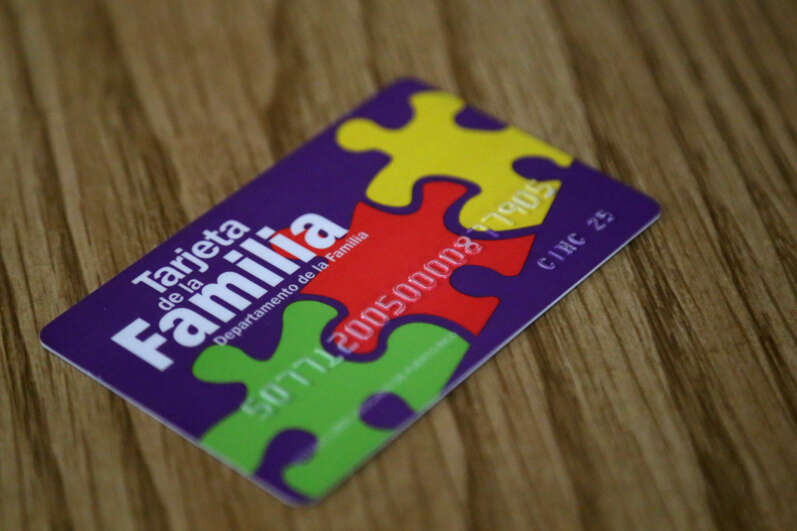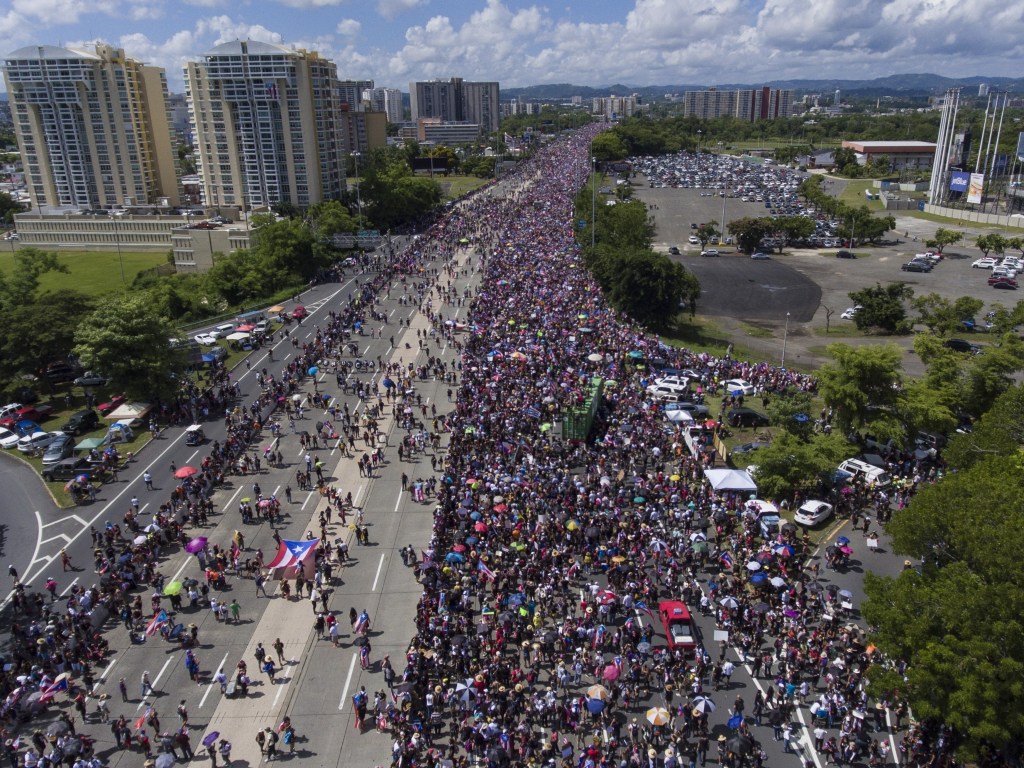Hello! During the past week I came across a publication titled “Aging and the Left Behind: Puerto Rico and Its Unconventional Rapid Aging” (Matos-Moreno, 2022). It was a very insightful read for me and I felt it necessary to share this publication and summarize what I learned from it. I have been hearing about the rapid aging of Puerto Rico (PR) since I can remember. I think it is an issue that should be further discussed by the healthcare community and especially the younger generation that aspires to be a part of the improvement of our healthcare system and country.
What is the article about?
The article presents irrefusable data that supports the premise about Puerto Rico’s rapid aging, provides reasons and confirmation about why this trend is happening, and lists research references that help in knowing about this. The article also predicts the impact that this situation will have on the population concerning existing problems about the sustainability of government services and long-term economic projection. Interestingly, the article highlights the impact this will have on caregiving dynamics for the aging population. Finally, the article mentions a set of issues that should be addressed to overcome and prevent most of the challenges.

Important data shared
In this article, the authors made it a priority to present and communicate important data that supports the premise that Puerto Rico’s population is aging rapidly. The following are some of the data I found to be the most interesting:
- 2020 estimates places Puerto Rico’s population share of adults (65+ years) as the 10th highest in the world.
- 13% of Puerto Rico’s population was 65 years or older, in 2010. This number increased to 21% in 2019.
- More than 700,000 working-age adults (20-64) have out-migrated in the last 15 years.
- In 2010 population decreased 2.2% for the first time compared to last decennial count.
- In 2020, population declined an 11.8% compared to the 2010 count.
- Old-age support ratio in 2019 is equal to 33.1 older adults per 100 working-age population.
It is very important to note that the authors use all this information to support the idea that Puerto Rico is aging mainly due to the outmigration of working-age adults. The article notes that this ongoing migration wave is a result of the economic instability that Puerto Ricans have been experiencing since the mid-2000’s. Authors also iterate that reduced births and increased life expectancy further contribute to the rapid aging.
Important research on aging in Puerto Rico
The article mentions the following studies as important references for data regarding gerontological research. Note that the following are not the only studies that evaluate aging in Puerto Rico, but the ones that this article has cited.
- Puerto Rico Elderly: Health Conditions survey (PREHCO)
- It is said that this is the only representative study of older adults in Puerto Rico.
- PREHCO is an island-wide study of the social, economic, and health conditions that affect older adults. This study took into consideration prevalence and correlates of prominent diseases as health indicators.
- “10/66 Dementia Research Group” survey
- Puerto Rico Alzheimer ’s Disease Initiative (PRADI)
The article mentions and describes these studies in order to emphasize the “need for additional population-based data sets of a longitudinal nature focused on aging “. Adding that including larger samples will be important as well as considering Puerto Ricans living in other countries aside from the United States.
Aging and Health in Puerto Rico
The authors of this article included a section titled as above where they made sure to talk about how and why the older adults in Puerto Rico are a disadvantaged group compared to older adults in the United State in terms of social and physical well-being. In my opinion this section was the most insightful. The following sentence, extracted from this section of the article, I believe summarizes very well this situation and the concern this will create for government administration:
“Given the poor health and economic profile of the older adult population in Puerto Rico, an expected increase in health care and social services usage associated with rapid population aging could obstruct healthy aging if older adults’ needs are not met.”
Another interesting point that is raised in this section is that “approximately 39.7% of older adults in Puerto Rico live under the poverty level. Furthermore, the primary source of income for older adults is Social Security (80.8%) followed by Supplemental Nutrition Assistance Plan (40.7%)”.

Demographic Challenge Act
The article talks about an “effort” made from Puerto Rico’s government to address the affect of outmigration on population aging and references the approval by the Puerto Rico Legislative Assembly of the “Demographic Challenge Act of 2010”. The Demographic Challenge Committee is created with the two main goal of (1) studying demographic phenomena occurring in PR and the factors influencing these processes and (2) to issue recommendations to address the needs of Puerto Rico’s aging population. Although very broad goals, they seem to be directed to provide answers to most of the issues with the rapid aging…
The committee established 7 policy elements to reduce societal, cultural, and economic crises. The article mentions the following:
- Increase the number of births to 60,000 per year
- Reduce the number of deaths to 20,000 per year
- Reduce net migration to ZERO
- Increase the availability of public housing and long-term care for the older adult population
As I was read this, I could not decide whether to laugh or cry as three of these policies just seem absurd and unrealistic to me. Additionally, the article notes that “while the committee was tasked with analyzing demographic trends and issuing policy recommendations, there was no commitment that these would be implemented through legislation or executive action”. I very much hope that for the next generation of healthcare professionals in Puerto Rico and future leaders of the country, reading this make you feel a bit angry, or even offended. I am sure that when our time comes, we will do a better job and won’t let history keep repeating itself.

Key Emerging Issues on Aging
As the last point made by the authors of this article, five emerging key issues are noted. I believe this is the conclusion and most important part of the argument. The authors made sure to present possible solutions to these problems.
- Reduction in caregiving and social support
- Article emphasizes how outmigration and reduced fertility in prior decades will impact life in older adults as they will be experiencing increased isolation and lower social participation
- Older adults would confront more challenges in finding adequate caregiving and social support
- The article notes that more studies should be supported to understand the increased demand for social and health services and adapt to the population’s need
- Article emphasizes how outmigration and reduced fertility in prior decades will impact life in older adults as they will be experiencing increased isolation and lower social participation
- Financial insecurity in late life
- Recent measures the government as implemented to reduce government spending is creating barriers and challenges for older adults’ financial security
- The article notes that new data sources designed to capture monetary transfers and financial support are needed.
- Disparities in access to health care
- Puerto Ricans older adults have unequal health care benefits compared to those residing in the United States, even though monetary contributions are the same.
- Structural inequalities coupled with increased outmigration of health care professionals worsens health care access for older adults staying in Puerto Rico.
- The article notes that more research is needed to understand and overcome public policy challenges that accentuate disparities in health care
- Puerto Ricans older adults have unequal health care benefits compared to those residing in the United States, even though monetary contributions are the same.
- Return migration
- The probable return of older adults that have raised their children in the United States, would increase the pace of population aging on the island
- The article notes the importance of being aware of this.
- Measures and government reforms, including pension reductions that affect the already eroded economy, do not provide fertile sole for self-realization, growing, thriving, and establishing roots in Puerto Rico
- The article notes that the Government needs to develop programs that incentivize working-age adults to stay or return and contribute to Puerto Rico’s family structure, health care system, and economy.

Conclusion
I believe that if you have come this far and read this article. You most likely already know what the conclusion is. I would like to end this blog entry with the following quote form the article, that I think does a great job at summarizing the conclusion: “In Puerto Rico, population aging will be substantially felt in all social and economic institutions over the coming years. Family composition and dynamics will change, work and retirement will be transformed, built environments will shift purpose, a higher percentage of the population will depend on social security and pensions, and Medicare appropriations will need to support a higher percentage of the population. Many institutions will struggle as the workforce declines and must prepare for Puerto Rico’s demographic transformation. How Puerto Rico will address the challenge of rapid aging remains unclear and requires new policy effort”.
References
Matos-Moreno A, Verdery AM, Mendes de Leon CF, De Jesús-Monge VM, Santos-Lozada AR. Aging and the Left Behind: Puerto Rico and Its Unconventional Rapid Aging. Gerontologist. 2022 Aug 12;62(7):964-973. doi: 10.1093/geront/gnac082. PMID: 35696667; PMCID: PMC9372893.

